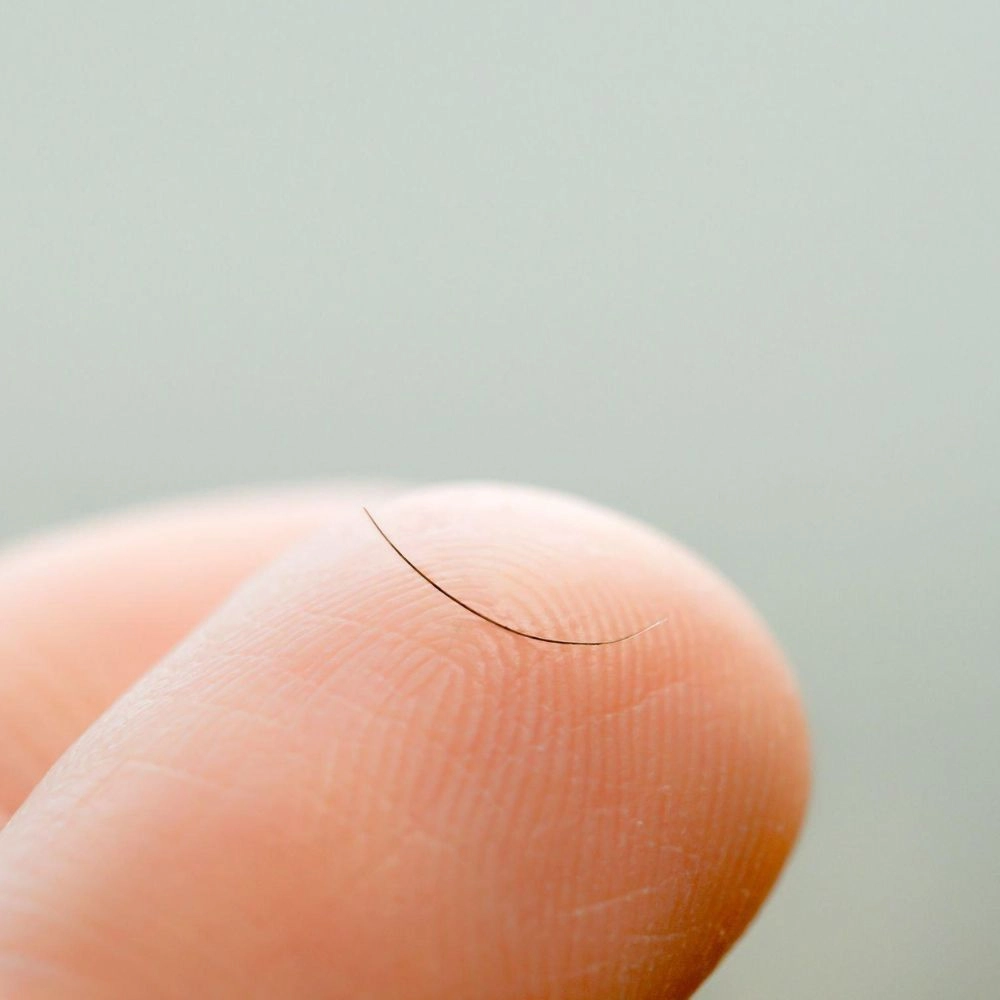Table of content
- Types of BREAST RECONSTRUCTION
- Procedure
- Risks and complications
- Pre-operation preparation
- Post-operative care
- Expected Results and recovery timeline
- Appointments and consultation
- Frequently asked questions
- Meet the team
- Pricing and payment plans
- Medical literature and research
- Support and counseling
- Send a message
EYELASH HAIR LOSS
INDICATION – BRIEF
Eyelash hair loss, or madarosis, can be due to various clinical and non-clinical factors. Clinically, it could be due to eyelid inflammation (blepharitis), dermatitis, hair-pulling disorder (trichotillomania), autoimmune disorders like alopecia areata, infections, or chemotherapy. Non-clinical reasons can include mechanical trauma from rubbing eyes or improper makeup use, aging, or nutritional deficiencies. The treatment is based on identifying and addressing the underlying cause, which may involve medication, therapy, improved hygiene or nutrition. It’s important to consult a healthcare provider for accurate diagnosis and treatment.

INDICATION – DEFINITION
Here’s a brief overview of the potential clinical and non-clinical causes:
Clinical factors
- Blepharitis: This is a condition that causes inflammation of the eyelids which can lead to loss of eyelashes.
- Dermatitis: Both atopic and contact dermatitis can cause eyelashes to fall out.
- Trichotillomania: This is a psychological condition where a person pulls out their hair, including eyelashes, often due to stress or anxiety.
- Autoimmune disorders: Conditions like alopecia areata can cause hair loss on the scalp and eyelashes.
- Infections or mites: Infections or infestations like styes, fungal infections, or Demodex mites can lead to eyelash loss.
- Chemotherapy: Certain chemotherapy drugs used for cancer treatment can cause hair loss, including the loss of eyelashes.
Non-clinical factors
- Mechanical trauma: Habitual rubbing of eyes or improper use of makeup (mascara), eyelash curlers, false eyelashes or extensions can lead to loss of eyelashes.
- Age: Aging can also contribute to the thinning of eyelashes.
- Nutritional deficiencies: Lack of certain vitamins and minerals (e.g., iron deficiency) can affect hair health and lead to eyelash loss.
Treatment and management of eyelash loss depend on the underlying cause. Identifying and addressing the root cause is crucial. It may include medicated eye drops or ointments, behavioral therapy, better hygiene practices, improved nutrition, or other specific treatments based on the cause.
SYMPTOMS AND DIAGNOSIS
Symptoms
The primary symptom of madarosis is the loss of eyelashes. The loss can be partial or complete, and it can occur in one eye or both. Additional symptoms may be present, depending on the underlying cause, including:
- Redness, swelling, or itching of the eyelid (blepharitis, dermatitis, infection)
- Compulsion to pull out hair from eyelashes or other areas (trichotillomania)
- Other areas of hair loss on the body (alopecia areata)
- General symptoms of illness like fever or malaise if the cause is a systemic infection
Diagnosis
Diagnosing the cause of eyelash hair loss involves a comprehensive clinical evaluation and detailed patient history. Depending on the suspected cause, the following diagnostic procedures may be used:
- Physical Examination: The doctor will closely examine your eyelashes, eyelids, and the surrounding areas for signs of inflammation, infection, or skin disorders.
- Detailed Patient History: The doctor will ask about your medical history, lifestyle, and any other symptoms you may have.
- Skin Biopsy: If a skin disorder is suspected, a small sample of skin from the eyelid might be taken to be examined under a microscope.
- Blood Tests: If an autoimmune disorder or nutritional deficiency is suspected, blood tests might be required to confirm the diagnosis.
- Psychological Evaluation: If trichotillomania is suspected, a psychological evaluation may be recommended.
Prognosis and Impact

Prognosis
The prognosis of madarosis largely depends on the underlying cause. If the cause is an external factor like improper use of makeup or physical trauma due to eyelash curlers, the prognosis is generally good. Once these damaging activities are stopped, eyelashes often regrow in several weeks to a few months.
For conditions like blepharitis or dermatitis, the eyelashes usually grow back once the underlying condition is treated, though it may take several weeks or even months for full regrowth.
In cases of trichotillomania, treatment success and prognosis vary greatly and depend on the person’s commitment to cognitive-behavioral therapy or other treatments.
For autoimmune conditions like alopecia areata, the course of the disease is often unpredictable, and the prognosis can be challenging to determine. Some people have full regrowth, while others may experience more extensive hair loss.
Impact
The loss of eyelashes can significantly impact a person’s life, especially from a psychological standpoint. Eyelashes play a critical role in facial aesthetics, and their loss can lead to a decrease in self-esteem and confidence. Some people may experience anxiety or depression due to the change in their appearance.
It’s also important to remember that eyelashes play a functional role in protecting the eyes from foreign particles. Their loss could lead to increased sensitivity to dust and light.
It’s essential to consult with a healthcare provider for a comprehensive evaluation and treatment plan, and possibly psychological support if needed. This is a general overview and any health concern should be discussed with a healthcare provider for accurate diagnosis and treatment. AI cannot replace professional medical advice
Treatment Options
- Blepharitis/Dermatitis: Treatment for these conditions often involves good eyelid hygiene, warm compresses, and in some cases, prescription medication such as antibiotic or steroid eye drops or ointments to reduce inflammation.
- Trichotillomania: This condition often requires psychological or psychiatric intervention, such as cognitive-behavioral therapy (CBT) or medication for underlying issues like anxiety or depression.
- Alopecia Areata: Treatment might involve corticosteroids to reduce inflammation and suppress the immune system, or other medications like minoxidil (Rogaine) to promote hair growth.
- Infections/Mites: Bacterial infections might be treated with antibiotic eye drops or ointments, while mite infestations may be treated with tea tree oil eyelid scrubs or other specialized treatments.
- Chemotherapy-induced hair loss: This is typically temporary, with hair usually growing back after treatment ends. Some patients may choose to use eyelash extensions or false eyelashes during this time.
- Mechanical Trauma: The best treatment here is prevention – avoid harsh makeup removers, don’t rub eyes vigorously, and use eyelash curlers gently. If eyelashes have been pulled out, they usually grow back in 1-2 months.
- Nutritional Deficiencies: Increasing intake of the deficient nutrient through diet or supplementation can help improve hair health over time.
Risks and Side Effects
- Blepharitis/Dermatitis Treatments: Steroid and antibiotic eye drops or ointments can sometimes cause irritation, redness, or blurred vision. Prolonged use of topical steroids may also lead to glaucoma or cataracts.
- Trichotillomania Treatments: Medications for anxiety or depression can have side effects such as dizziness, dry mouth, fatigue, weight changes, and even sexual dysfunction. Cognitive-behavioral therapy generally has fewer side effects, but it requires active participation and may cause temporary emotional discomfort.
- Alopecia Areata Treatments: Corticosteroids can have side effects including weight gain, mood changes, high blood pressure, and bone thinning. Topical minoxidil may cause scalp irritation, unwanted hair growth in adjacent areas, and very rarely, an allergic reaction.
- Infections/Mites Treatments: Antibiotics can sometimes cause local skin irritation or allergic reactions. Tea tree oil can also cause skin irritation, redness, or swelling.
- Chemotherapy: Side effects are extensive and depend on the specific drugs used. Hair loss (including eyelashes) is a common side effect, but it is usually temporary.
- Mechanical Trauma Prevention: There aren’t many risks associated with stopping damaging behaviors, but changes in makeup routine may initially be inconvenient.
- Nutritional Deficiency Treatments: Supplements can cause side effects like upset stomach, constipation, or diarrhea, and excessive amounts can lead to toxicity. It’s best to correct deficiencies under the guidance of a healthcare provider.
- Eyelash Growth Serums: Potential side effects include red or itchy eyes, darkened eyelids, darkened iris color, and unwanted hair growth in areas the product repeatedly contacts.
FAQ Section
Eyelash hair loss can occur due to various reasons, including clinical factors like blepharitis, dermatitis, trichotillomania, alopecia areata, infections, and chemotherapy, as well as non-clinical causes like mechanical trauma, aging, and nutritional deficiencies.
Yes, in many cases, eyelashes can grow back. The regrowth time and success rate largely depend on the underlying cause of the loss.
The growth rate can vary, but typically, eyelashes take several weeks to a few months to grow back.
Yes, treatments are available and are determined based on the cause of the loss. They range from good eyelid hygiene, medications, psychological therapies, to nutritional supplementation.
Side effects depend on the specific treatment used. They can range from minor skin irritation to more severe ones like mood changes or high blood pressure. It’s important to discuss potential side effects with your healthcare provider.
In some cases, yes. Proper eye hygiene, gentle handling of eyelashes, and a well-balanced diet can help prevent certain types of eyelash loss. However, some causes, like autoimmune diseases or chemotherapy, can’t be prevented.
While the physical impact might be minor, the loss of eyelashes can lead to self-esteem issues or distress about appearance. Eyelashes also provide a protective function, and their loss could increase sensitivity to dust and light.
